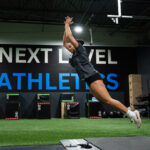The Importance of Athlete Development in Youth Sports
Athlete development in youth sports sets the stage for long-term success. More than just winning games, it’s about teaching kids how to move, grow, and thrive. With the right support, young athletes can improve their skills, avoid injuries, and enjoy sports for life.
In this article, we’ll explore how athlete development works in youth sports and why it matters more than ever.
What Is Athlete Development in Youth Sports?
Athlete development in youth sports focuses on physical, mental, and social growth. It combines training, skill-building, and education in a way that’s appropriate for each child’s age and stage.
This process starts early—often before a child decides to focus on a specific sport. It includes learning basic movement patterns, developing coordination, and encouraging participation in multiple sports.
Youth athlete development isn’t about making champions—it’s about creating well-rounded individuals.
Benefits of Early Athlete Development
Helping kids grow into athletes comes with lifelong benefits. When development is done right, kids gain:
1. Physical Literacy
They learn how to run, jump, throw, and move efficiently. These skills transfer across sports and everyday life.
2. Injury Prevention
Young bodies need gradual training. Smart development reduces overuse injuries and builds strong movement patterns.
3. Confidence and Motivation
Success builds belief. Encouraging improvement helps young athletes feel more capable and motivated to continue.
4. Healthy Habits for Life
Kids who enjoy sports and feel successful are more likely to stay active as adults.
Programs like Next Level Athletics USA emphasize holistic training that supports youth athlete development from the ground up.
Key Components of Youth Athlete Development
A good youth training plan goes beyond drills and sprints. It includes:
Fundamental Movement Training
This means focusing on body control, balance, and coordination. Activities should be fun and varied—tag games, obstacle courses, and relay races are great.
Age-Appropriate Strength Work
Strength training isn’t just for older athletes. Even young kids can safely build strength using bodyweight movements, resistance bands, and light weights under proper supervision.
According to NSCA guidelines, strength training improves bone health, posture, and injury resistance in youth athletes.
Skill Progression
Young athletes should gradually develop skills specific to their sport(s). However, early specialization is discouraged. It’s better to build a solid foundation first.
Mental and Emotional Support
Kids need encouragement, patience, and positive reinforcement. Coaches and parents should celebrate effort, not just results.
Sample Youth Athlete Development Week (Ages 10–14)
Here’s what a well-rounded week could look like:
-
Monday: Movement games + bodyweight circuit
-
Wednesday: Agility drills + skill-focused practice
-
Friday: Core strength + partner coordination drills
-
Saturday: Play a different sport or attend a fun group session
Each session should include a warm-up, focus time, and a cool-down.
Mistakes to Avoid in Youth Athlete Development
Even with good intentions, some approaches can hurt long-term progress. Watch out for:
-
Pushing too hard too soon
-
Focusing only on wins and stats
-
Skipping foundational movement training
-
Ignoring rest and recovery
-
Specializing in one sport too early
The goal is to help kids love movement—not burn out before high school.
The Role of Parents and Coaches in Athlete Development
Parents and coaches are critical to a child’s success in sports. Their attitudes shape the athlete’s experience.
How Coaches Help
-
Teach proper movement and technique
-
Set age-appropriate goals
-
Foster teamwork and fun
-
Adapt plans to fit each athlete’s needs
How Parents Can Support
-
Encourage variety in play and sport
-
Focus on growth, not perfection
-
Provide rest and nutrition support
-
Be a positive role model
When adults collaborate, the athlete wins.
Creating a Positive Development Environment
Great development happens in the right environment. Here’s how to build one:
-
Keep things fun and engaging
-
Emphasize learning, not just performance
-
Adjust drills to suit different levels
-
Include social time and team-building
Positive experiences in youth sports lead to confident, capable athletes.
Final Thoughts
Athlete development in youth sports is about more than building future stars. It’s about teaching kids how to move, grow, and enjoy being active for life.
By focusing on movement quality, age-appropriate training, and emotional support, we can help every child reach their potential—on and off the field.
With the right guidance, young athletes don’t just learn how to compete. They learn how to thrive.


Recent Comments